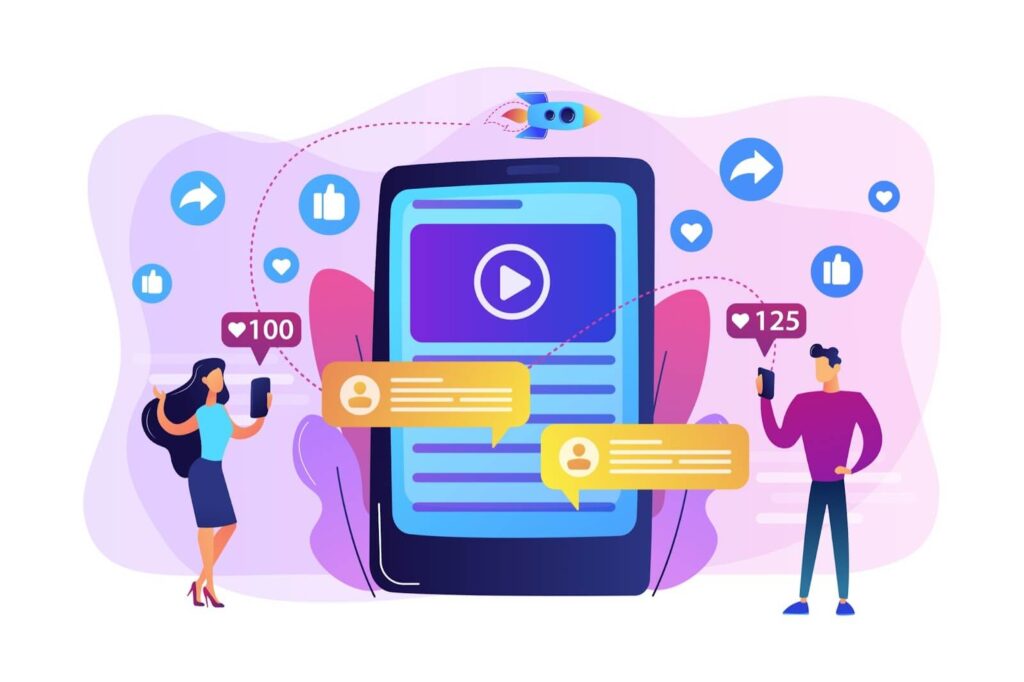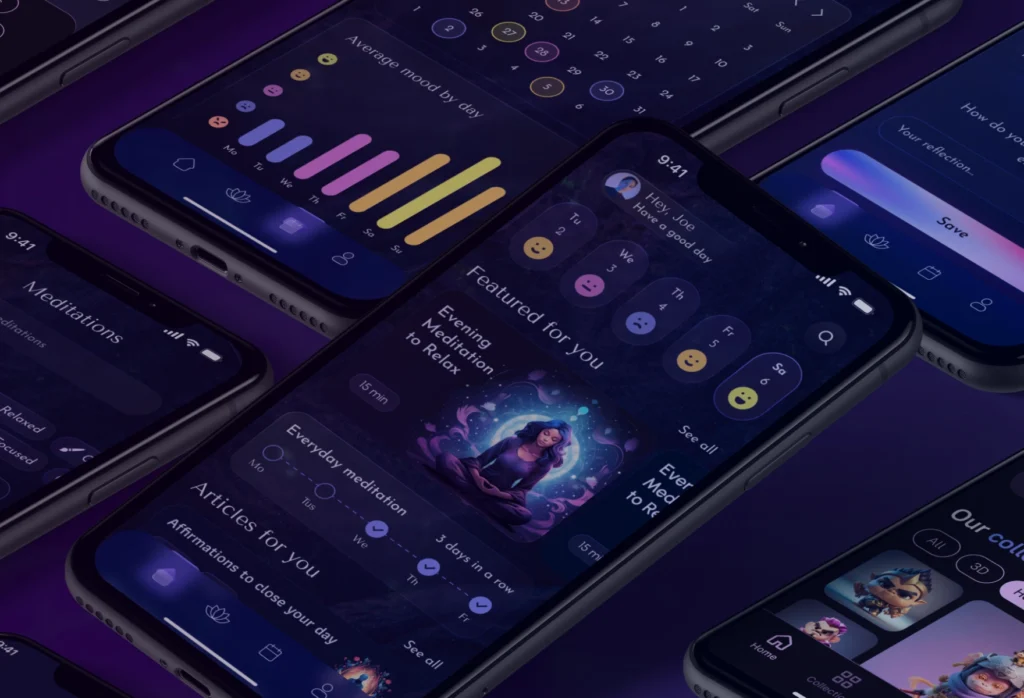A Guide On What is Over-The-Top (OTT) App
Table of content
Everybody is now talking about over-the-top media (or OTT) today. It’s not only a buzzword for those who like to enjoy video streaming and TV platforms but also a great tool for businesses to gain revenue, open new marketing channels and build a strong brand name.
Over-the-top media is a complex and varied domain that changes every week and every day, flourishing with new trends. Even though it might seem unknown, the technology is present almost everywhere, including Disney Plus and Netflix. And if you are one of those who want to enter the industry and invest in over-the-top streaming development, you will need to understand what OTT is, inside and out.

A huge number of TV and video watchers have moved to OTT. According to the latest data, the industry has reached over $160 billion. In addition, a study conducted in 2019 shows that a whopping 70% of US households had an OTT subscription. The number is only going to grow, and businesses can consider this space for building revenue.
The key driver for OTT success is convenience. With traditional cable TV, people can watch only the given information, and it is also outdated in the digital world. Comparatively, the internet streaming services such as Netflix, Hulu, and Disney Plus are getting more and more users because they provide ultimate convenience and allow viewers to access the content they want with no visual mess.
So in order to learn more about OTT app development, you will need to learn the basics. Let’s get started.
What Does Over-the-Top (OTT) App Mean?
An over-the-top (OTT) app represents any service offering a product over the internet and avoiding traditional distribution. Such services are usually closely related to media and communication and are typically, if not always, lower in price than the traditional method of media delivery.
Thinh about an over-the-top app as something that disrupts traditional billing models starting from telcos or cable/satellite companies. The most well-known real cases are Hulu or Netflix for video (which quickly replaced the regular TV provider) or Skype.
The development of OTT applications has brought a wide-ranging conflict within companies providing similar services. However, the world is moving forward, and tech companies always look for fresh ideas for people worldwide. This is why traditional ISPs and telcos have to think about challenges related to third-party firms.
Even though a large portion of media consumers still pay the cable company for access to the internet, they soon may get rid of this by turning to the cheaper streaming video over the internet. While OTT is a broad term, there are several most popular types of these apps that include:
1. OTT Services
Services that were always worked offline, through applying tangible and even physical materials, have lost their popularity and are going over the top today. Hailing a taxi is a great example of how mobile OTT applications have replaced the traditional model. Years ago, you had to physically hail a taxi to fetch a ride. Today’s ride-sharing services provide ultimate convenience and reduce any hassle, turning into the private transportation industry.

2. Streaming OTT Apps
Streaming OTT apps are considered the most popular services. Streaming products like Hulu, YouTube TV, and Netflix platform have been allowed to almost the whole world and reduce the need in paying cable providers for content delivery.
3. OTT Devices
OTT devices allow for the emergence of more over-the-top technologies. Well-known devices including Roku, Chromecast, and Fire Stick provide users with an opportunity to watch their favorite content directly on their TVs.
Benefits of OTT Apps
Highly Targeted Advertising
The over-the-top (OTT) app development has transformed the programmatic advertising world by providing brand-new marketing channels and offering a way to give users highly targeted ads. OTT has brought all these tools to most channels that previously were not able to target or track engagement.
Once upon a time, television companies could not always be sure how many people had seen the ads and how they interacted with services. This is where over-the-top apps come into the picture and can help companies to target ads and track the feedback from various segments more efficiently.
Customer Segmentation
Just like with ads, OTT applications provide marketers with an opportunity to segment potential users more directly, such as live user segmentation. Let’s take a podcast as an example – a few years later, companies provided information with little to no understanding of the audience. In contrast, modern podcast services can create content according to users’ geography, device types, interests, and more.

Ultimate Convenience
Since the internet is now available in any country, from any device, and at any time, using the OTT services is now incredibly easy. Comparatively, regular Cable networks are usually bounded by both physical and geographical limits. This freedom and constant availability of OTT apps makes such products hassle-free to use and brings ultimate convenience.
Varied Content
As you may have seen, cable networks provide only carefully approved content that they offer. Even though the content is restricted, it provides various spheres, like news, movies, lots of ads, live games, series, kids’ content, etc. Therefore, the viewer has to choose among all these channels and find something that resonates with their interests.
OTT services provide a wide range of content, both paid and free. While subscriptions offer a chance to become a prime member and watch the most interesting content, free profiles allow viewers to choose among varied, almost unlimited content of the highest quality.
Device Independent Viewing
This is probably the biggest benefit of running the OTT application. Users can easily watch the streaming, listen to podcasts or just enjoy a movie from any device they want and are comfortable with.
Why Should You Create Your Own OTT App?
In order to understand the reason why you need to consider the OTT mobile app development, we need to see facts and numbers. In 2019, the global OTT market size was estimated at $121.61 billion and was said to reach approximately $1,039.03 billion by 2027, with a CAGR of 29.4% from 2020 to 2027.
Since traditional cable TV is considered outdated, you can reap the benefits of this modernization trend and enter a highly popular industry. Additionally, this domain is not overwhelmed with applications and requires more players for growth and development. The over-the-top industry is considered to face innovative and advanced transformation, enabling consumers to access everything they want in a single platform.

The growth of this sector is mainly driven by factors including the demand for OTT platforms in developing regions, availability of a wide range of content, the popularity of live streaming channels, as well as COVID-19 impact.
Steps For OTT Application Development
Choose a Niche
Identifying the right specific niche is the key driver for your competitive advantage in the market. Even though OTT video streaming is a broad concept, you will need to find out what niche lacks services and what is most interesting for you.
Create a Content Inventory
As you might have understood, the content is at the basics of an OTT video app. Once attempting to build a video streaming application, you have to first identify what content you would provide. You can’t miss this step, as the app will be built according to the content it will provide.
Choose a Business Model
To create OTT app that will achieve success, you will need to first understand what monetization way you want. Whether it will be advertising-based, subscription-based, or transactional revenue, you can choose among many options and find out how you will get revenue from the app. The most popular techniques are:

SVOD: This is the abbreviation for Subscription Video On Demand. This model is highly popular among OTT applications where consumers pay a fee either every month or every year to the company that provides the video material. This model keeps subscribers engaged and still provides app owners with various methods of gaining stable revenue.
AVOD: Known as the Advertisement-Based Video on Demand, it is a model that allows consumers to download videos without any payments. Therefore, users can watch their favorite content for free. The app’s owner gets payments from placing ads. Even though most people do not like ads, they will still enjoy such a model as it is free for them.
TVOD: Less popular but still widely used model. These apps provide consumers with the ability to pay for a particular content via a pay-per-view technique.
Create Your Website
Once you are ready with the monetization model, you will need to create a website as the first module of your OTT service. Even though you will then develop an app, the web version is usually the primary source of video material, where over 39% of users prefer to view content on them. It offers you the following:
- Get a higher ranking of search engines
- Offering easy payments
- Boost user’s loyalty
- Keep customers informed and support them effectively
Identify a Tech-Stack
If you hire an OTT app development company, the Project Manager and Business Analyst will select the required tech stack for your app. However, if you decide to develop a product by looking for developers and designers on your own, you will need to learn more languages used for app development.
Even though there is much software that is used for OTT development, the best tech stack will be based on many factors, including your own needs, developer’s knowledge, and product concept.
Below you will see a rough stack that engineers may use for making Netflix-like OOT apps:
- Kotlin, Swift, JavaScript, and Python as the languages
- React, NodeJS, and Win.JS as libraries and frameworks.
- MongoDB, Oracle, MySQL, and Cassandra as database and cloud services.
After Launch
Since apps also require marketing after launch, you will need to consider using mobile app marketing services. Even though marketing has long been far from mobile apps, now the world’s largest companies and startups understand the importance of promoting your product to help it stand out from the crowd.
The OTT market is booming, and now you can face many competitors. Luckily, only a few of them promote their applications, so you have a great chance to attract more clients and show users the benefits of using your services.

Why Interexy?
Now that you’ve learned every step you need about making an app like Netflix or Hulu, it is time to realize your idea in the most convenient and hassle-free way – by partnering with an experienced development team like Interexy.
Interexy. is one such company that pioneers in OTT app development and prides itself on outstanding custom solutions for every client. Since our team comprises only drive minds who have already worked with such products, you can rest assured knowing only experts in the OTT field are responsible for building your app.
Let’s learn more about your idea and create a plan for your success!
Final Thoughts
The OTT trend is flourishing and shows no signs of slowing down due to many reasons, including user convenience, the demand in mobile apps, and COVID-19 breakout. However, the industry also has a wide range of competitors, so you will need to create a unique application that will gain attention through custom development and marking after launch. If you are still looking for a team that will take your idea and bring it to reality, Interexy is here for any questions!
FAQs
What is OTT app?
Over-the-top (OTT) apps represent software that delivers streaming content to audiences over the internet to any device.
What is the difference between OTT and VOD?
Both OTT and VOD allow users to watch content they like whenever they choose to. However, while OTT is only allowed to transmit over the internet, VOD requires cable and satellite as well.
How Much Does It Cost to Develop An OTT App?
There is a rough answer to this question as the cost depends on resources needed, timelines, geolocation of developers, app’s complexity, and more. But the price usually starts from $50.00$.














